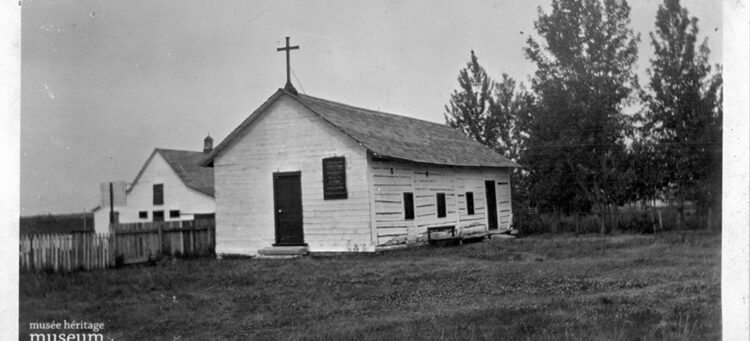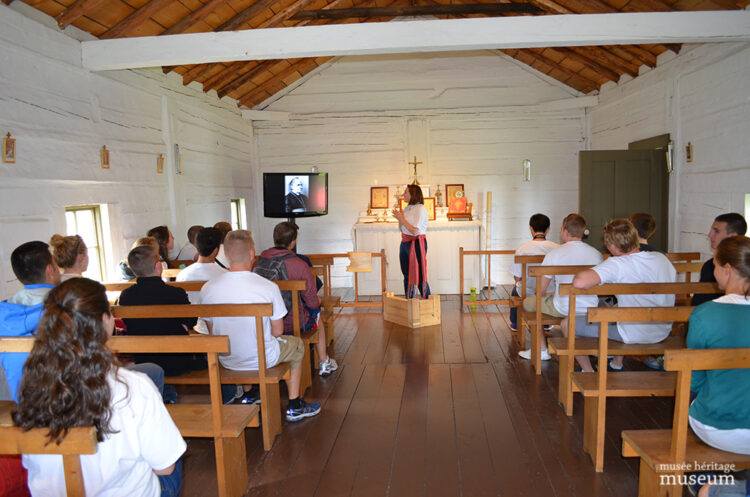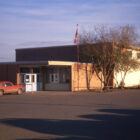
Then & Now
Father Lacombe Chapel
May, 2022
Decades before social justice warriors made “inclusion” an anthemic buzzword to bandy about, folks from diverse backgrounds put that credo to good use by creating a structure that remains the province’s oldest surviving building. But the result of their efforts, Father Lacombe Chapel, is far more than an enduring edifice, it’s a symbolic hub of the St. Albert community that saw a tiny hamlet grow over the years to become Alberta’s fifth-largest city. Modest in its construction, but highly utilitarian, the chapel and its history are worth documenting to reflect the essence of what is now one of Canada’s most prosperous urban centres.
1861
After years of working in what is now western Canada, Quebec native, and Catholic priest Albert Lacombe saw the possibilities of what his faith could do to help unite the local Blackfoot, Cree, Métis, and a few newly-arrived settlers. To that end, in January, he convinced his boss, Bishop Alexander Tache that a chapel be built on the mission’s grounds, located on a hill overlooking the Sturgeon River.
Lacombe enlisted the services of a few Métis workers from Lac Ste. Anne to build a chapel, using spruce logs and a construction technique previously used in the Red River settlement called “post on sill.” It involved cutting slits into the vertical columns of the frame to accommodate the horizontal log walls and pegs needed to hold the pieces in place.
Because of the ingenuity, the chapel—designed to be broken down and reassembled for relocation purposes—was completed in 10 days. The building, measuring roughly 35 feet long and 30 feet wide, served not only as a chapel but a residence for Lacombe, until the following year when a place was built for him.

1864
Because the community surrounding the chapel was growing, the place was starting to get a bit cramped. That’s when Lacombe hired a group of gold miners working on sluices on the banks of the North Saskatchewan River to build an addition to the structure. That section apparently didn’t last very long, as historical records are very ambiguous on its dimensions.
1870
Bishop Vital-Justin Grandin, who arrived at the St. Albert mission in 1868, took over most duties previously under the domain of Lacombe, who by now was spending more time traveling the prairies to settle disputes between the Blackfoot and Cree. With the settlement’s population reaching 1,000, Grandin decided to build a larger church bearing his name on the same ground occupied by the Lacombe chapel.
The chapel was moved elsewhere on the mission site and was used as a facility to store grain, machinery and supplies. Years later, the building itself was taken apart and put into storage.
1927–1929
As part of a promise by a local committee to honour Lacombe (who passed away in 1916), by creating a statue, it was also decided that the original chapel be reassembled and preserved as a museum.
However, that task was easier said than done, as much of the wood had deteriorated over time, especially on the butt ends of the logs that joined the other vertical spruce columns. Workers wound up replacing about 40 percent of the original wood. To further preserve the chapel, crews designed and built a protective brick shell around the building, with a perimeter walkway spanning roughly three feet between the shell and the original building exterior.
Inside, the museum included artifacts and furnishings from the time Lacombe administered his duties at the chapel as well as several personal items used by the priest.
1969–1972
The chapel undergoes more restorations after the museum contents are further updated and catalogued. These upgrades lead to the changing of the building’s name from Musée Lacombe Museum to the Father Lacombe Museum and the formation of the Father Lacombe Museum Board in 1971. The following year, the board is incorporated as the St. Albert Historical Society with an even larger mandate to not only heighten the profile of the chapel’s spiritual significance in the region but also increase awareness of the city’s history.
1980–2022
As part of Alberta’s 75th anniversary, the provincial provides the historical society grant money to further restore and relocate the Lacombe building to its original site at what is now 5 St. Vital Avenue (The church that replaced the Lacombe facility in 1870 was destroyed by a fire in 1921.). The government also declares the original chapel as a historical structure.
But the big job was its restoration, starting with demolishing the brick shell which, as it turned out, actually increased the rate of log rot on the building. Most of the exterior was replaced by wood as close to the spruce initially used in construction. Lime and sand mortar, a common building material from the 19th century, was applied to fill in any gaps.
While most of the walls were in good shape, the floor and roof had to be replaced as well as some pews and parts of the altar. Windows and doors were also refitted while the bells, cracked after years of use, had to be replaced. By the time the upgrade was completed, less than half of the chapel’s original materials remained. Since then, the museum has become open annually to the public from May until September, although the pandemic suspended those operations in 2020 and 2021.t8n













